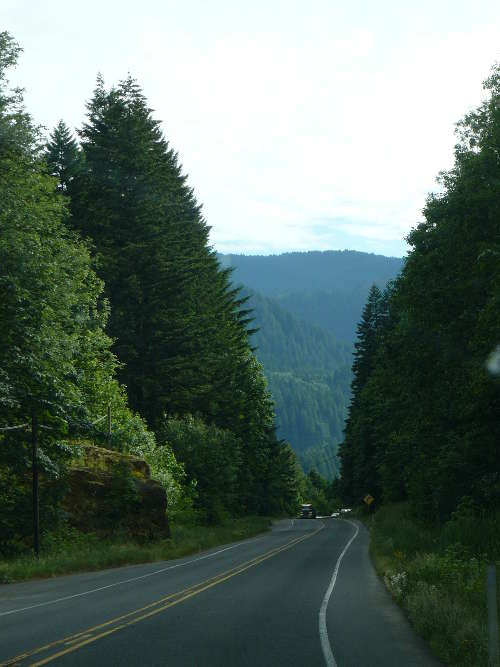 Location Taken: Columbia River Gorge, Washington Side
Location Taken: Columbia River Gorge, Washington Side
Time Taken: June 2008
You know, it’s easy to forget how different the trees are on the West Coast versus the East Coast. The West Coast ones are just… bigger.
Well, that and the West Coast ones (and I’m talking primarially Washington and Oregon here, I haven’t been to California) are primarially coniferous evergreens. In the New England/Mid Atlantic area, despite being at around the same latitude, it’s majority deciduous.
Coniferous trees seem to be able to grow taller than deciduous. For instance, on this list of the ten tallest tree species, only one of the ten is deciduous, the Phillipine Rosewood, or Toog Tree, and that’s so poorly known it’s not even on Wikipedia. (Though oddly enough, it is on the Lituanian Wikipedia, of all things). Other lists like this one have no deciduous trees at all. I think. That one’s last listing is of a family that can be either, and there wasn’t enough information for me to tell either way…
It’s surprising how little data there is on some species out there, even ones that manage to make top-ten lists…
I suppose it makes sense. I mean, evergreens are getting energy year round, and don’t have to support large leaves. And these top ten species are concentrated in the temperate rainforest biome, which is wet enough to provide tons of energy and tends not to get fierce storms. Well, at least not locally generated fierce storms. Some parts of Japan are in this biome, but it gets hit by typhoons too often for the massive trees to grow super-tall without getting knocked down first. And other areas get hit by frontal systems or monsoons or what not that do similar.
There aren’t many temperate rainforests in the world period, so there’s only a few places where the conditions are right for big trees. And even then, only two of them, the Pacific Northwest of the US and Tasmania in Australia, seem to have triggered the height race to the top.
Though from what my research says, the other ones, while not in the running for world-leader in height, still do much better than the rest of their region. And even in these regions, most of the trees are shorter than the biggest champs. Sometimes it’s natural factors that keep most of them shorter, but at least in the Pacific Northwest, it was primarily humans killing off the biggest trees. Something about lumberjacks looking up and thinking “if I chop down THAT tree, it’ll give me more wood than chopping down hundreds of trees elsewhere!”
These days, though, they tend to spare the largest of the trees. But they’ve also converted large areas of these temperate rainforests into logging forests, left to grow for 10 to 20 years and then chopped down and replanted. Or cleared them out of the way to build houses and roads and all those other human things. I suspect these trees along this road in Southern Washington started growing not long after the road was built. Pine trees grow fairly quickly, after all. Perhaps in a hundred years or so, the whole area will be full of massive trees once again, even if they’re still surrounded by houses.
